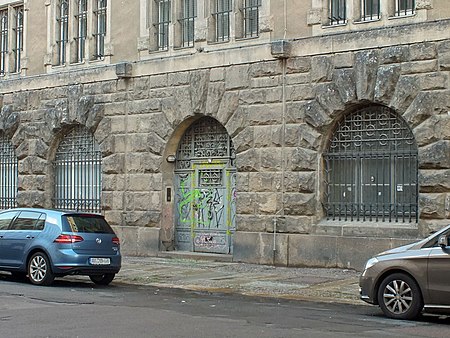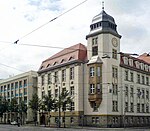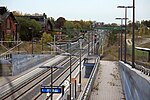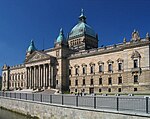Leipzig Prison
Buildings and structures in LeipzigDefunct prisons in GermanyExecution sites

Leipzig Prison (Strafvollzugseinrichtung Leipzig, later Justizvollzugsanstalt Leipzig) was a prison in Leipzig, Germany. Built together with an adjacent court building in 1906, it was used as a prison until 2003. During East German rule, a secret part of the prison was used as the central execution site of East Germany. Between 1960 and 1978, 18 Nazi war criminals were executed at Leipzig Prison. In 1981, Werner Teske was the final person executed here. The prison was used until 2003, the site is now used as an extension of the nearby court building, with the execution site remaining as a memorial site.
Excerpt from the Wikipedia article Leipzig Prison (License: CC BY-SA 3.0, Authors, Images).Leipzig Prison
Arndtstraße, Leipzig Südvorstadt (Süd)
Geographical coordinates (GPS) Address Nearby Places Show on map
Geographical coordinates (GPS)
| Latitude | Longitude |
|---|---|
| N 51.3226 ° | E 12.3755 ° |
Address
Zentrale Hinrichtungsstätte der DDR
Arndtstraße 48
04275 Leipzig, Südvorstadt (Süd)
Saxony, Germany
Open on Google Maps











